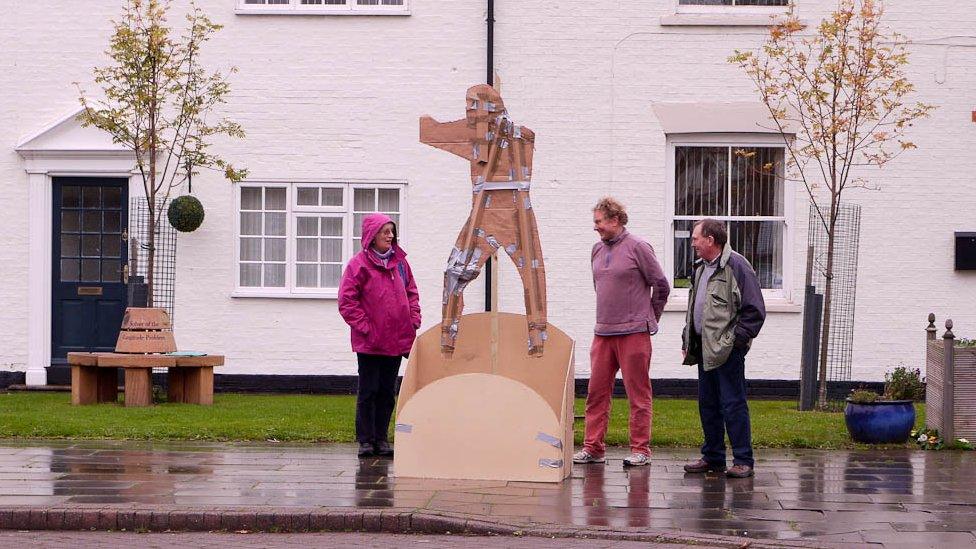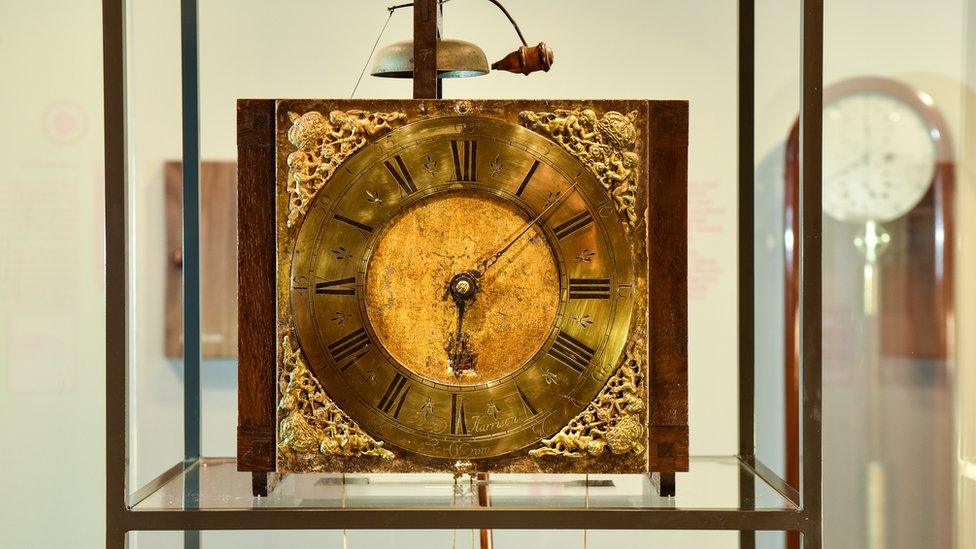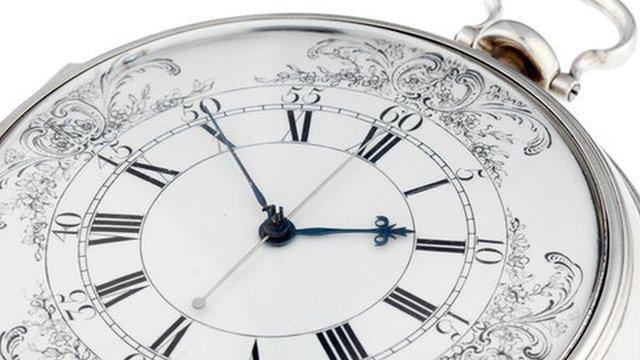Clockmaker John Harrison statue appeal for Barrow upon Humber
- Published

A prototype of the John Harrison statue, which is planned to be created by artist Marcus Cornish
A village in North Lincolnshire is raising money for a sculpture to honour the achievements of its most famous resident - clockmaker John Harrison.
Born in 1693, Harrison grew up in Barrow upon Humber where he went on to invent the marine chronometer.
Community group Better Barrow said it needed £70,000 for a life-size bronze statue of the inventor in the village.
Despite a plaque in Westminster Abbey, Harrison is yet to be recognised in his home town, said chairman Trevor Millum.
"There is no statue to celebrate the achievements of Harrison anywhere in the country or, as far as we know, anywhere else," said Mr Millum.
"We are approaching donors, both nationally and internationally, for help in raising the balance of the money for the project to go ahead."
Mr Millum said the group planned to commission artist Marcus Cornish to create the statue, which would depict Harrison winding his H4 marine chronometer clock.
It would be erected in either Market Place or Church Bank.

Who was John Harrison?

One of John Harrison's three surviving long-case clocks
The son of a carpenter, Harrison was born in Nostell, near Wakefield.
His family later moved to the North Lincolnshire village sometime in the 1700s, where he spent his early years creating clocks entirely from wood.
His marine chronometer was used by sailors to accurately measure a ship's position at sea, as well as to tell the time.
By the time he reached his 20s he was producing long-case clocks.
The clockmaker spent much of his later life trying to solve the problem of determining longitude at sea.
Sailors of the period had no way of calculating where they were when travelling east to west.
They knew that for every 15 degrees travelled eastward, the local time moves forward one hour.
Harrison realised the solution was creating a reliable clock that could keep the time of a reference place, such as Greenwich, and provide an accurate local time.
- Published25 March 2017

- Published19 May 2014
